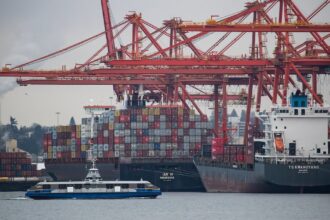In the rush to position Canada as a global liquefied natural gas powerhouse, we’re ignoring crucial lessons from Down Under that could come back to haunt us. Australia’s LNG boom offers a sobering case study that demands our attention before we replicate their missteps on Canadian soil.
When Australia embarked on its ambitious LNG export strategy in the early 2000s, the promise was enticing: economic growth, job creation, and energy security. Fast forward to today, and Australian consumers face skyrocketing domestic gas prices while multinational corporations reap billions in export profits. This disconnect between national interest and corporate gain wasn’t inevitable—it was the predictable outcome of poor policy design.
Canada stands at a similar crossroads. With projects like LNG Canada in British Columbia progressing toward completion and numerous others in various planning stages across the country, we’re witnessing the birth of what many hope will be our next resource boom. The narrative is compelling: Canadian natural gas flowing to energy-hungry Asian markets could reduce global coal consumption while driving economic prosperity at home.
But the story from Australia reveals the potential pitfalls. When they opened the floodgates to LNG exports without adequate domestic supply protections, the consequence was a two-tiered market where local users suddenly competed with international buyers willing to pay premium prices. The result? Domestic manufacturers and households faced energy bills that doubled or tripled, creating economic stress that rippled through their economy.
“The promise of LNG prosperity comes with fine print that policymakers often overlook,” explains energy economist Patricia Mohr. “Without proper safeguards, domestic consumers effectively subsidize the export business through higher prices.”
The Canadian gas market has historically benefited from relative isolation, with prices typically lower than global benchmarks. This advantage has supported our manufacturing sector and kept heating costs manageable for Canadian households. As we connect to global markets through LNG exports, this insulation disappears.
What’s particularly concerning is the lack of robust public discourse around these potential consequences. While industry representatives champion the economic benefits, there’s been surprisingly little discussion about implementing policies that would protect Canadian consumers and businesses from price shocks.
Australia eventually implemented an “Australian Domestic Gas Security Mechanism” that allows the government to restrict exports if domestic shortages loom. But this came only after years of pain for local consumers and businesses. The mechanism itself remains controversial and has proven difficult to enforce effectively.
Canada has the luxury of learning from Australia’s experience rather than repeating it. Policy options exist that could balance export ambitions with domestic needs: export quotas tied to domestic supply guarantees, price caps for Canadian consumers, or royalty structures that capture more value for public benefit.
The stakes extend beyond economics. As we navigate climate commitments and energy transitions, natural gas plays a complex role. While cleaner than coal when burned, the methane emissions from its production and transport raise serious climate concerns. If we’re exporting gas under the banner of climate progress, we must ensure the emissions accounting is honest and comprehensive.
Indigenous partnerships represent another crucial dimension that distinguishes the Canadian context. Many First Nations see LNG development as an economic opportunity, while others oppose projects on their traditional territories. Meaningful reconciliation demands that these perspectives shape our national approach rather than being treated as afterthoughts.
The cultural dimensions of this resource debate reflect deeper questions about Canadian identity. Are we content to remain primarily resource exporters, or can we build value-added industries that create more sustainable prosperity? The answers will shape not just our economy but our society for generations.
As federal and provincial governments develop regulatory frameworks for this nascent industry, they would be wise to study Australia’s experience closely. The window for getting the policy architecture right is narrow and closing rapidly as projects advance.
Will Canada chart a more balanced course for LNG development, or will short-term thinking lead us to repeat Australia’s mistakes? The choice is still ours to make, but the time for that choice is now—before the first tankers leave our shores.























